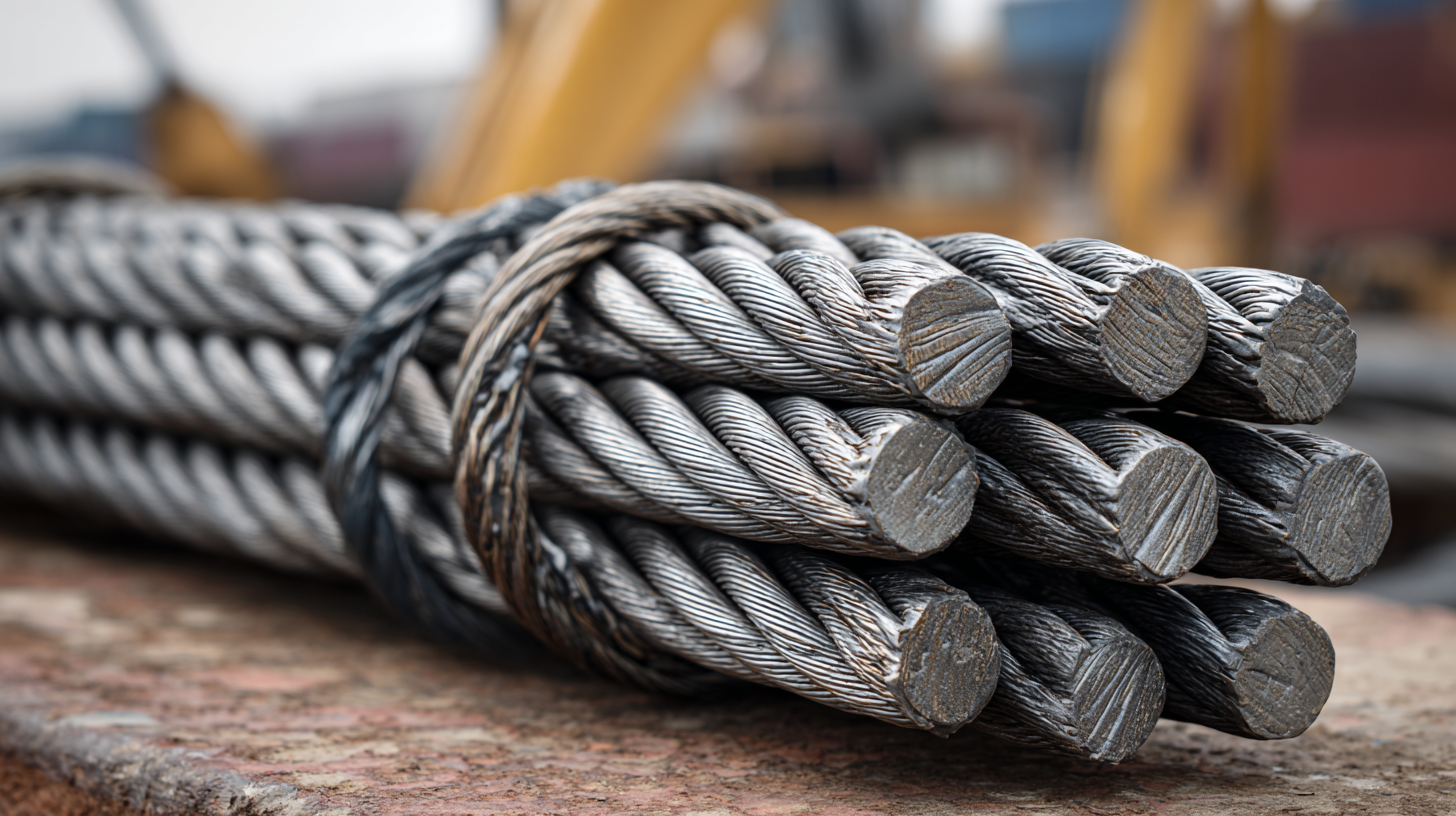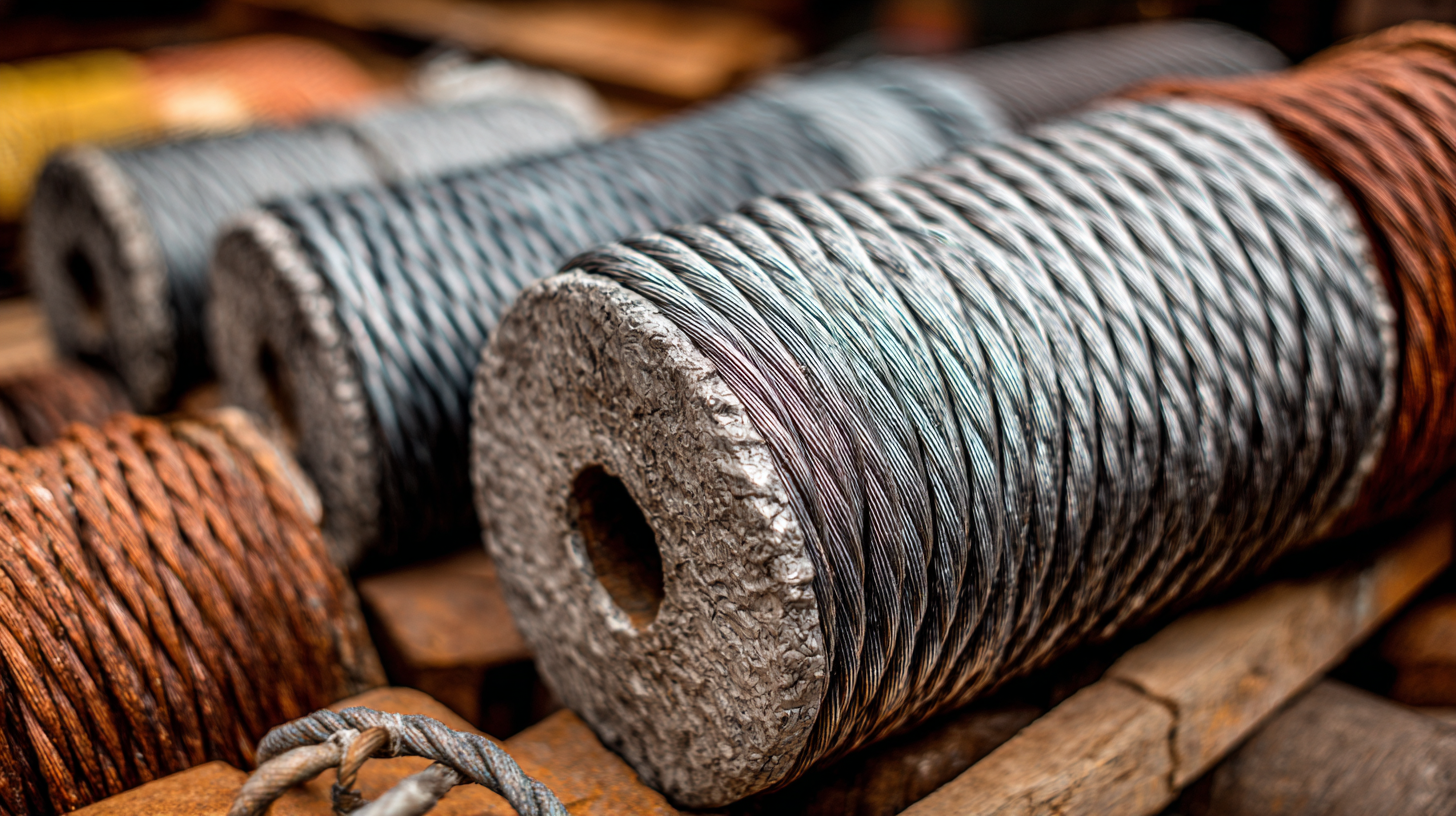How to Choose the Right Hoist Steel Wire Rope for Your Lifting Needs
When it comes to lifting heavy objects, selecting the appropriate equipment is crucial for ensuring safety and efficiency. One of the key components in this process is the Hoist Steel Wire Rope, which serves as the backbone of your lifting operation.
 With a wide variety of options available, from different materials to varying diameters and strengths, choosing the right hoist rope can significantly impact the performance of your lifting equipment. This guide aims to provide you with essential insights and considerations to help you make an informed decision tailored to your specific lifting needs.
Whether you are working in construction, manufacturing, or any other industry relying on heavy lifting, understanding the characteristics of Hoist Steel Wire Ropes will enable you to enhance your operations while minimizing risks.
With a wide variety of options available, from different materials to varying diameters and strengths, choosing the right hoist rope can significantly impact the performance of your lifting equipment. This guide aims to provide you with essential insights and considerations to help you make an informed decision tailored to your specific lifting needs.
Whether you are working in construction, manufacturing, or any other industry relying on heavy lifting, understanding the characteristics of Hoist Steel Wire Ropes will enable you to enhance your operations while minimizing risks.
Understanding Hoist Steel Wire Rope Specifications for Safe Lifting
When selecting the appropriate hoist steel wire rope for lifting applications, it is crucial to understand the specifications that ensure safety and efficiency. The performance characteristics of wire ropes, such as tensile strength, diameter, and construction type, significantly influence their suitability for various lifting tasks. In the offshore construction industry, where the demand for renewable energy sources like wind power is on the rise, specialized lifting equipment with robust wire ropes is essential for handling heavy components safely and effectively.
Recent advancements in lifting technology, such as the development of synthetic wire ropes, present viable alternatives to traditional steel wire. These synthetic options offer advantages like reduced maintenance costs and enhanced safety through features such as barb-free operation, minimizing risks during handling. Furthermore, as industry standards evolve, guidelines for inspecting and maintaining hoist rope sheaves are being established to prevent failures caused by factors such as corrosion and wear. Understanding these specifications and innovations is vital for ensuring that the right wire rope is chosen to meet specific lifting needs while maintaining safety and operational integrity.
Choosing the Right Hoist Steel Wire Rope Specifications for Safe Lifting
Evaluating Load Capacities: Matching Wire Rope to Your Hoisting Requirements
When choosing the right hoist steel wire rope for specific lifting needs, evaluating load capacities is paramount. Recent investigations by the NTSB pointed to undetected corrosion as a critical factor in wire rope failures, particularly in heavy-lift applications. This highlights the importance of assessing the environmental conditions under which the wire rope will operate, as factors like seawater can exacerbate wear and fatigue, leading to diminished load-bearing capabilities over time.
Moreover, studies have shown that the coupling of tribo-corrosion and fatigue can significantly impact the integrity of wire ropes, particularly in high-stress environments such as offshore rigs. Increased fatigue loads result in more severe damage to wire ropes, which can compromise their functionality and safety. Therefore, selecting a wire rope involves not only understanding the maximum load requirements but also considering the potential for wear and environmental degradation. Proper evaluation of these factors ensures that the wire rope chosen can safely meet hoisting demands while minimizing the risk of failures.
Assessing Corrosion Resistance: Selecting the Right Material for Durability
When selecting steel wire rope for hoisting applications, assessing corrosion resistance is crucial to ensure long-lasting durability and performance. According to a report by the Wire Rope Manufacturers Association, corrosion can reduce the lifespan of wire ropes by up to 50%, significantly impacting operational safety and efficiency. One of the key factors influencing corrosion resistance is the material itself. Galvanized wire ropes, for instance, are coated with a layer of zinc which acts as a barrier against environmental factors, making them highly effective in outdoor or marine applications.
In addition to galvanization, stainless steel wire ropes offer superior corrosion resistance due to their composition, which includes chromium that forms a protective layer against oxidative elements. A study published in the Journal of Construction and Building Materials indicated that while stainless steel ropes may have a higher upfront cost, their longevity in corrosive environments can lead to lower total life cycle costs. It is essential for industries operating in harsh conditions, such as construction and offshore work, to prioritize materials that mitigate corrosion to enhance safety and operational life.
How to Choose the Right Hoist Steel Wire Rope for Your Lifting Needs - Assessing Corrosion Resistance: Selecting the Right Material for Durability
| Rope Material |
Corrosion Resistance |
Load Capacity (kg) |
Applications |
Maintenance Requirements |
| Galvanized Steel |
Moderate |
2000 |
Construction, Marine |
Regular Inspection |
| Stainless Steel |
High |
1500 |
Food Industry, Chemicals |
Low |
| Polyester Coated Wire |
High |
1000 |
Entertainment, Shipping |
Regular Cleaning |
| Chrome Plated Steel |
Moderate |
2500 |
Automotive, Lifting Equipment |
Routine Checks |
Choosing the Appropriate Diameter and Construction: Key Factors in Wire Rope Performance
When selecting the right hoist steel wire rope, the diameter and construction of the rope play pivotal roles in its overall performance and safety. According to a report by the Wire Rope Technical Board, the rope's diameter directly influences its strength, with larger diameters generally offering better load-bearing capacity. For instance, a steel wire rope with a diameter of 16 mm can support loads of up to 15 tons, whereas a 12 mm diameter rope may only manage around 8 tons. Thus, engineers must carefully assess the weight of the loads to be lifted and choose a rope diameter that provides a sufficient safety margin.
In addition to diameter, the construction design of the wire rope—such as the number of strands and wires—affects flexibility and fatigue resistance. The American Society of Mechanical Engineers emphasizes that a 6x37 construction, composed of six strands each containing 37 wires, offers greater flexibility and is ideal for applications requiring frequent bending. Conversely, a 6x19 construction, made up of fewer, thicker wires, is suited for heavy-duty lifting situations. By understanding these key factors, such as the load requirements and working conditions, users can make informed decisions when selecting the appropriate wire rope for their lifting needs.

Considering Industry Standards and Regulations for Wire Rope Selection
When selecting a hoist steel wire rope, adherence to industry standards and regulations is crucial to ensure safety and efficiency in lifting operations. Different industries have specific guidelines that dictate the type and construction of wire ropes suitable for various applications. For instance, the American Society of Mechanical Engineers (ASME) and Occupational Safety and Health Administration (OSHA) stipulate minimum requirements for wire rope specifications, including load ratings, construction types, and inspection protocols. Understanding these regulatory frameworks helps prevent accidents caused by inappropriate material usage.

Additionally, it's essential to consider the dynamic and static load conditions that the wire rope will encounter. The wire rope must not only meet load requirements but also align with the environmental conditions—such as temperature, humidity, and exposure to corrosive substances—that may affect its performance. Consulting the relevant industry standards ensures the chosen wire rope not only complies with safety regulations but also provides reliable service throughout its lifespan. This diligence in selection fosters a safer working environment and enhances operational reliability.

Home
About Us
Products
Stainless Steel Anchor Chain
Manganese Steel Lifting Chain Grade 80
Manganese Steel Lifting Chain
Hastelloy Round Bars
Hastelloy Sheet
Hastelloy steel pipe
Stainless steel wire rope
Stainless steel round
Stainless steel hexagonal rod
Stainless steel strip
Plastic coating wire rope
Stainless steel plate
Stainless steel angle
Stainless steel pipe
Stainless steel wire
Stainless steel flange
Stainless steel channel
Stainless steel flat steel
Industries
News
Service
Blog
Contact Us
 With a wide variety of options available, from different materials to varying diameters and strengths, choosing the right hoist rope can significantly impact the performance of your lifting equipment. This guide aims to provide you with essential insights and considerations to help you make an informed decision tailored to your specific lifting needs.
Whether you are working in
With a wide variety of options available, from different materials to varying diameters and strengths, choosing the right hoist rope can significantly impact the performance of your lifting equipment. This guide aims to provide you with essential insights and considerations to help you make an informed decision tailored to your specific lifting needs.
Whether you are working in 






